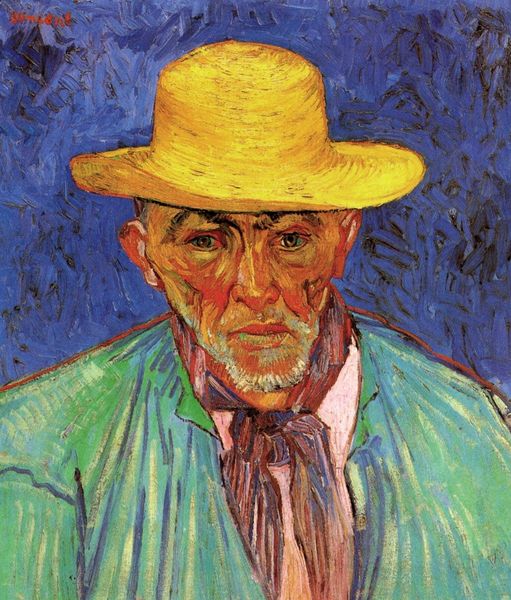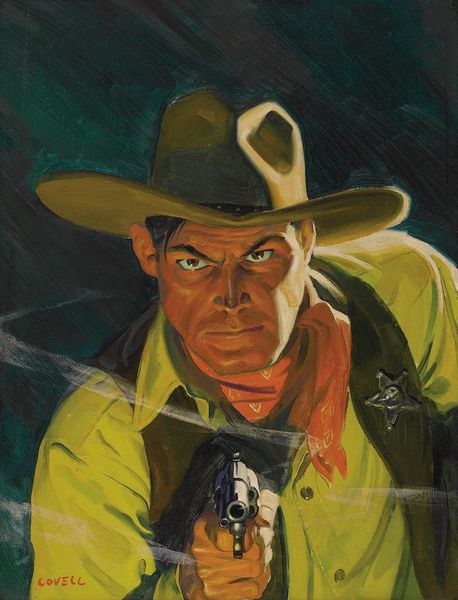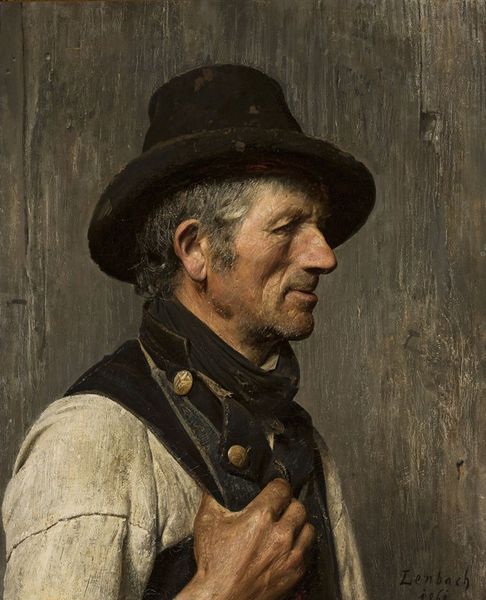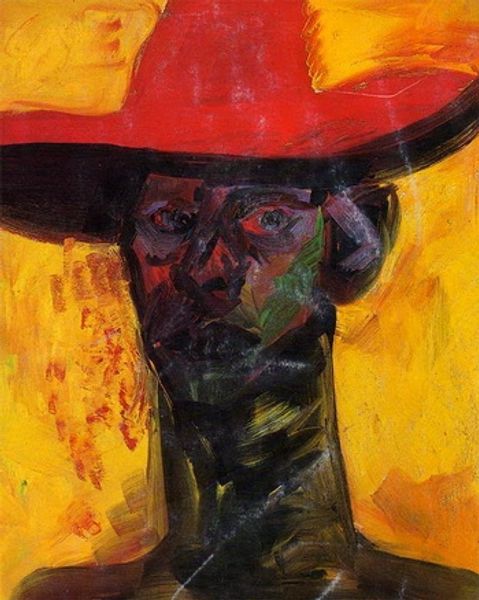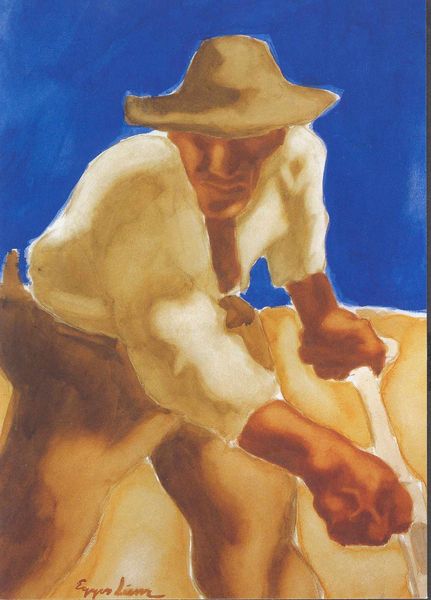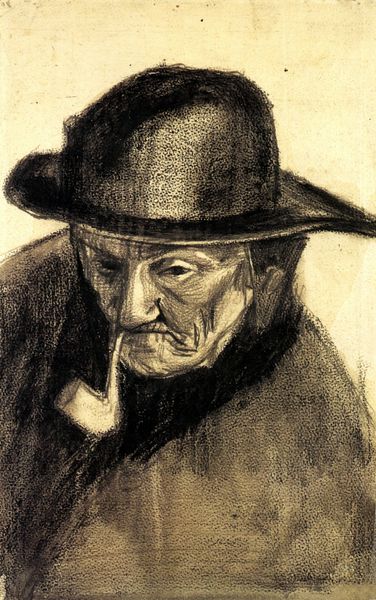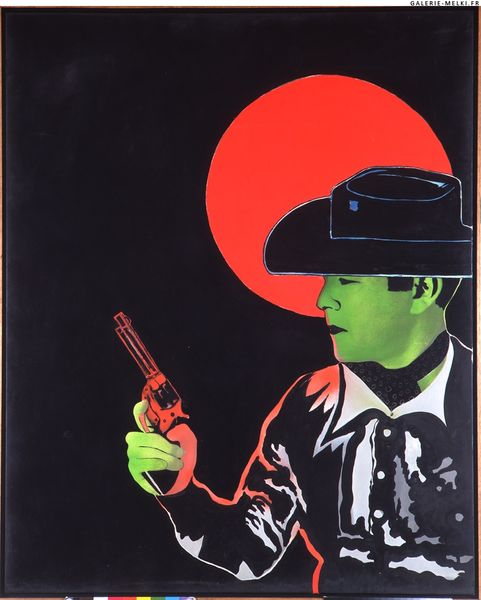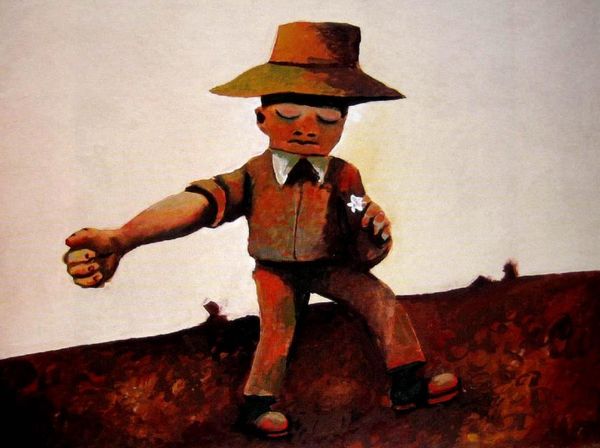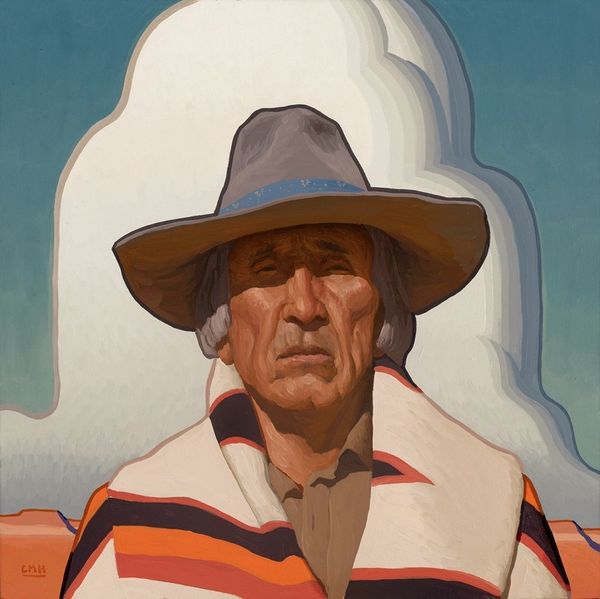
painting, oil-paint, impasto
#
portrait
#
portrait
#
painting
#
oil-paint
#
impasto
#
genre-painting
#
post-impressionism
#
realism
Dimensions: 69 x 56 cm
Copyright: Public domain
Curator: Van Gogh's "Portrait of Patience Escalier" from 1888 strikes me immediately with its poignant symbolism of labor and the dignity of the working class. Editor: My first impression is the roughness. Look at the materiality here – the thick impasto, the visible brushstrokes practically vibrating with energy, the raw application of color. You can practically feel the physicality of the paint itself. Curator: Absolutely, the colors convey so much, don’t they? The yellows and oranges give a sun-drenched feel, referencing long hours in the field and connecting Escalier to the cyclical rhythm of agricultural work, further emphasized by his calloused hands resting on that staff, so suggestive of patient toil. Editor: Yes, and it's interesting to note the context here: Van Gogh painted Escalier in Arles, Southern France. Arles was far from a rural idyll; the agriculture of the area was changing because of market demands and it's important to consider what it meant for the artist to render a man like this, seemingly untouched by time, with such visceral, thick application of paint. Was this simply an aesthetic style or a commentary on value placed on rural labor at this moment in history? Curator: It's a perfect lens to analyze van Gogh's psychological projection onto his subjects, and the broader theme of humanity's relationship with the land. Escalier almost becomes an archetype. His image can be tied to visual tradition stretching back centuries depicting rural workers and the value we, or he, ascribe to that work. Editor: But, and this is critical, he’s also a specific man, Patience Escalier. And the fact that Van Gogh is *making* a painting, slathering paint, drawing attention to process…he is emphasizing the act of material production. His paintings become commodities circulating within a different economy entirely. Curator: Right, but the commodification also transforms Escalier's story into a lasting artifact. It immortalizes him in a way that acknowledges and almost elevates the hardships of a simple life. It shows a continuity of purpose even in the face of socioeconomic change, which many portraits during that time period failed to deliver. Editor: Looking closely at the physicality of this work forces us to really contend with questions of how art, artists and sitter inhabit labor and how that might reveal shifts in society’s attitude about value and economy. Curator: Indeed, the dialogue it generates echoes through time. The power of the portrait stems from this very intersection of the universal and particular.
Comments
No comments
Be the first to comment and join the conversation on the ultimate creative platform.
